Considering the effects when testing is not done correctly.
Acceptance testing of fire and life safety systems, if not done properly and thoroughly, can have disastrous implications. Fire protection engineers, and the engineers in other disciplines who specify fire and life safety systems, should be at the forefront and actively involved in the acceptance testing of these systems.
The Society of Fire Protection Engineers can lead by example because fire protection engineers understand the implications of improper design; incorrect installation; lack of oversight; incomplete inspection; minimal, or lack of, inspection, testing, and maintenance; and system modifications that are not properly evaluated.
This column is not written only for the engineers, contractors and inspectors in cities with tall buildings in this country or other countries. It also is written for every Jane and Joe in small communities, towns and cities that have one or thousands of fire protection systems. The farther we get from the cities with the tallest buildings, the less oversight there may be of fire protection system design through acceptance testing. This is not true of every community, of course, but there are some large communities where it is not very good either.
Writing only one column about acceptance testing of fire and life safety systems is not an easy task because of the numerous types of systems, variety of stakeholders, level of understanding of the readers, and the multitude of possible goals or outcomes. I hope your takeaway from this column can be extrapolated to the need for accurate and thorough acceptance testing of all fire and life safety systems.
I realize the need to remind many of you that acceptance testing of fire and life safety systems may be the last operational test of the system and alarms before there is an event requiring that system (i.e., fire) to function as intended. The comparison must be made to heating, cooling and plumbing systems that are used every day; if they don’t work properly, someone complains. Fire protection systems are not actively or frequently operated.
The actual acceptance testing of clean agent systems, water mist systems, fire suppression systems, fire sprinkler systems, fire alarm systems, explosion suppression systems, passive fire protection systems, smoke control, and others all have their specific standards. We also need to consider the reason for the systems. Are they intended or required for property protection, life safety, business interruption, fire fighter safety or any combination of these?
Acceptance Testing Considerations:
- Is the acceptance testing assuming the systems are designed and installed correctly?
- Does the acceptance testing include a thorough inspection and review of the design and installation?
- What is the level of competency of the: Specifying engineer? Designer? Installer? Reviewer? Inspector(s)?
- Does the acceptance testing include commissioning? If so, there are many levels of commissioning from watching a few things happen to full compliance with the National Fire Protection Association’s (NFPA) NFPA 3, Standard for Commissioning of Fire Protection and Life Safety Systems.
- Observing several tests (e.g., hydrostatic and trip testing of dry pipe systems) is a basic level of the ‘normal’ acceptance testing as opposed to coordinating between trades or even completing the requirements of full commissioning.
A separate column could be written on each of the different types of fire protection systems. However, this colum will focus on the acceptance testing of fire sprinkler systems and, specifically, dry pipe systems. The basis is the NFPA standard, NFPA 13, Standard for the Installation of Sprinkler Systems, 2019 edition.
We will start by discussing the underground water main supply that is frequently connected to fire sprinkler systems. How many specifying engineers know what acceptance testing is required for underground mains feeding sprinkler systems? Very few. Writing underground water main specifications that stop five feet from the building and then start up with another specification to go the last five feet plus up through the floor tells me they don’t know.
We are concerned about the installation of the underground pipe, fittings, valves and their acceptance testing because if the testing is not done properly, it affects the owner, building, occupants, and fire sprinkler systems within the building. NFPA 13 in Chapter 28.1 addresses these minimum requirements.
The pictures in Figure 1 are from a new apartment building where the underground main blew apart a few months after occupancy, lifting the slab and breaking the roof line when the installing contractor put a PVC retainer flange on a ductile iron pipe. The photograph on the left is after repairs to the spigot piece. The elbow from the bottom of the spigot piece that was connected vertically to ductile iron and horizontally to PVC with PVC retainer flanges is on the right.
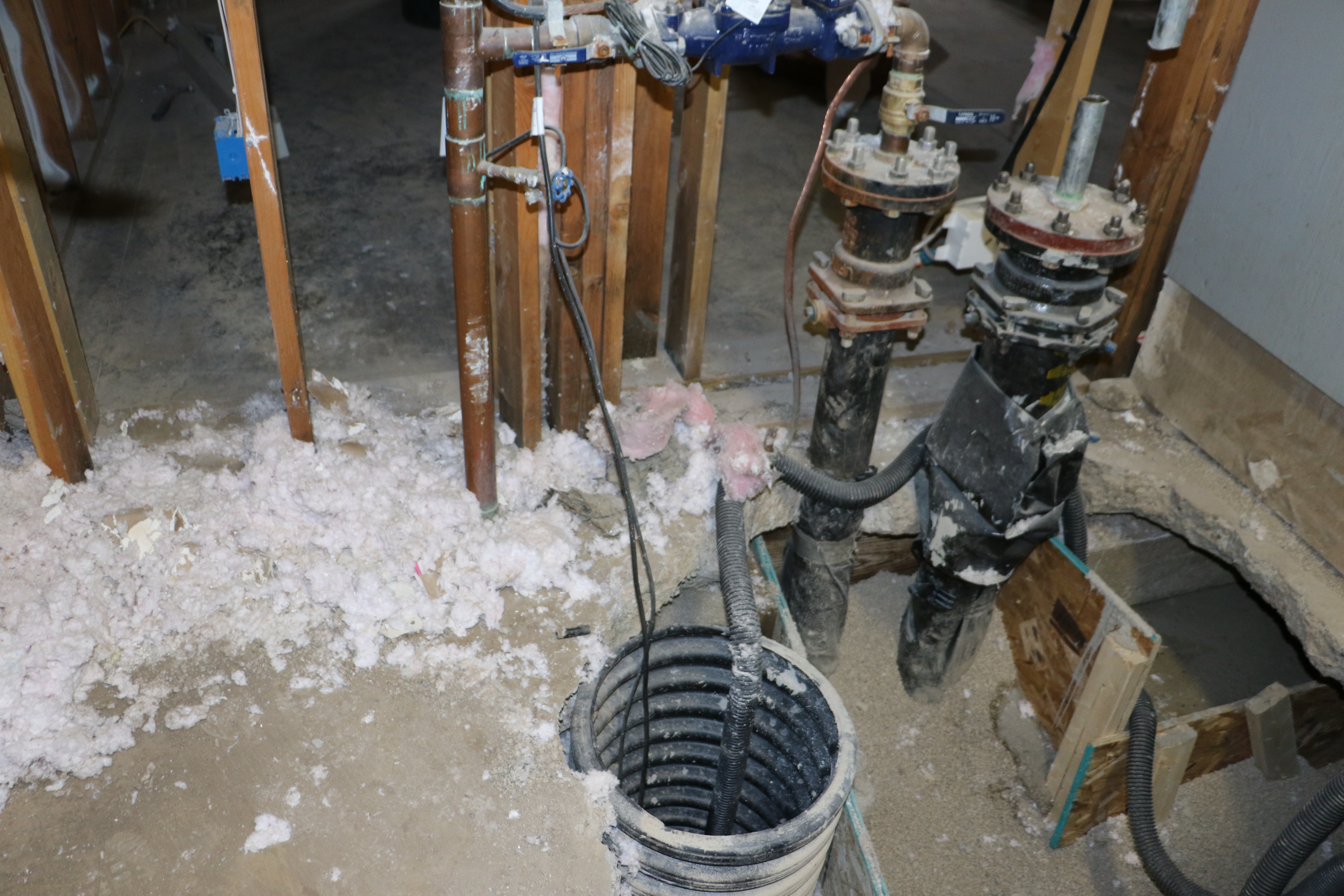

Figure 1 – Underground Water Main Failure
Figure 2 shows some of what was found when an underground main was not properly flushed. The asphalt, sand, rocks and sticks were in the dry pipe valves, the two sprinkler systems in the attic that were removed piece by piece and flushed, the water softeners, the water heaters, the drinking fountains, the ice makers and so on — all had to be replaced. This was an existing building under remodeling that included installing new fire sprinkler systems.

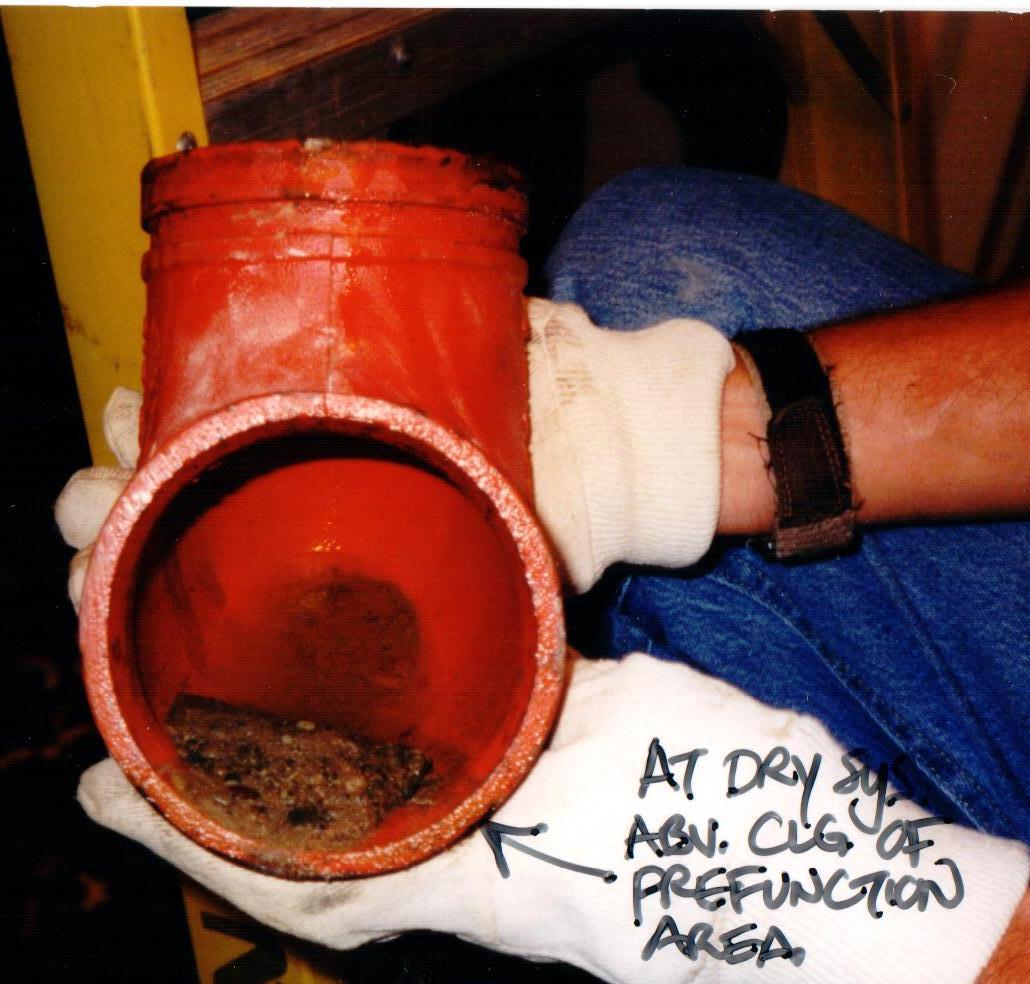
Figure 2 – Debris Found in a Dry System After Commissioning
Fire pumps, dry pipe valves and dry pipe systems (preaction and deluge, too) are very susceptible to damage when underground mains are not pressure-tested and flushed correctly. Acceptance testing of underground mains supplying fire sprinkler systems requires water flushing with flows not achieved through a garden hose. The garden hose is the standard piece of equipment and flushing method for many underground water main installers. From NFPA 13, Chapter 6, 2019 edition:
“6.10.2.1.1 Underground piping, from the water supply to the system riser, and lead-in connections to the system riser, including all hydrants, shall be completely flushed before connection is made to downstream fire protection piping.
Also, from NFPA 13, the actual minimum flow rates for flushing must achieve 10 feet/second: for 6-inch pipe, 880 gallons/minute; for 8-inch pipe, 1,560 gpm; for 10-inch pipe, 2,440 gpm; and for 12-inch pipe, 3,520 gpm. These are not achieved by flushing for domestic plumbing compliance.
Assuming the dry sprinkler system is designed and installed correctly, the acceptance test procedures should include all the following.
Coordination Between the Fire Alarm, Sprinkler System Contractors
A common mode of failure of dry sprinkler systems is the failure of the fire alarm contractor and fire sprinkler contractor to work together to test the automatic fire-extinguishing system operation devices (e.g., pressure switches and tamper switches).
They also need to ensure the proper signals are sent to the fire alarm panel, coordinate the message the signals need to convey, and ensure that the appropriate signals are sent from the fire alarm control panel and received by central station monitoring.
A low-air supervisory signal must be reported as a low-air supervisory signal and not as a trouble or alarm signal. Likewise, a dry system water-flow pressure switch signal must be reported as a fire alarm dry system water flow signal, not a trouble or supervisory signal. Makes sense, seems easy, right? Frequently it does not work that way.
If these two contractors don’t work together when the sprinkler fitter installs the switches and the fire alarm technician wires the switches and programs the panel, the possibility of failures increases. Along these same lines, if the fitter and technician aren’t both in attendance at the same time for acceptance testing, the likelihood of failure increases.
Dry Sprinkler System Testing
Acceptance testing of dry sprinkler systems in accordance with NFPA 13 includes the following, at a minimum:
- Pneumatic testing. 40 psi (2.7 bar) of air pressure for 24 hours measuring the pressure drop that cannot exceed 1.5 psi (0.1 bar).
- Hydrostatic testing. 200 psi (13.8 bar) or 50 psi (3.4 bar) above static pressure in excess of 150 psi (10.3 bar) for two hours. How do you do this in October through March in most of the northern half of the United States? If you try to do it in cold weather or with cold weather imminent, there is not any way you can get all of the water out of the system. If it doesn’t freeze and break, you are starting the corrosion cycle for black steel piping BEFORE the system is put in service for the first time.
- Trip testing. Trip the dry system from the inspector’s test connection, timing the valve trip and water flow. This test allows everyone to test the supervisory and fire alarm signals but also puts water in the black steel pipe system for a second time. Again, it must be drained thoroughly!
Thorough Draining of New Dry Pipe Sprinkler Systems
Dry pipe sprinkler systems require thorough draining after acceptance testing for two significant reasons. The first is the reason for a dry system: will be installed in areas where temperatures cannot be maintained above 40°F (4°C). Dry systems must be kept dry. If not, and if the water and moisture from the acceptance testing is not thoroughly removed, the water can freeze and break fittings, sprinklers and pipes. See Figure 3 for examples of freeze failures in dry sprinkler systems.
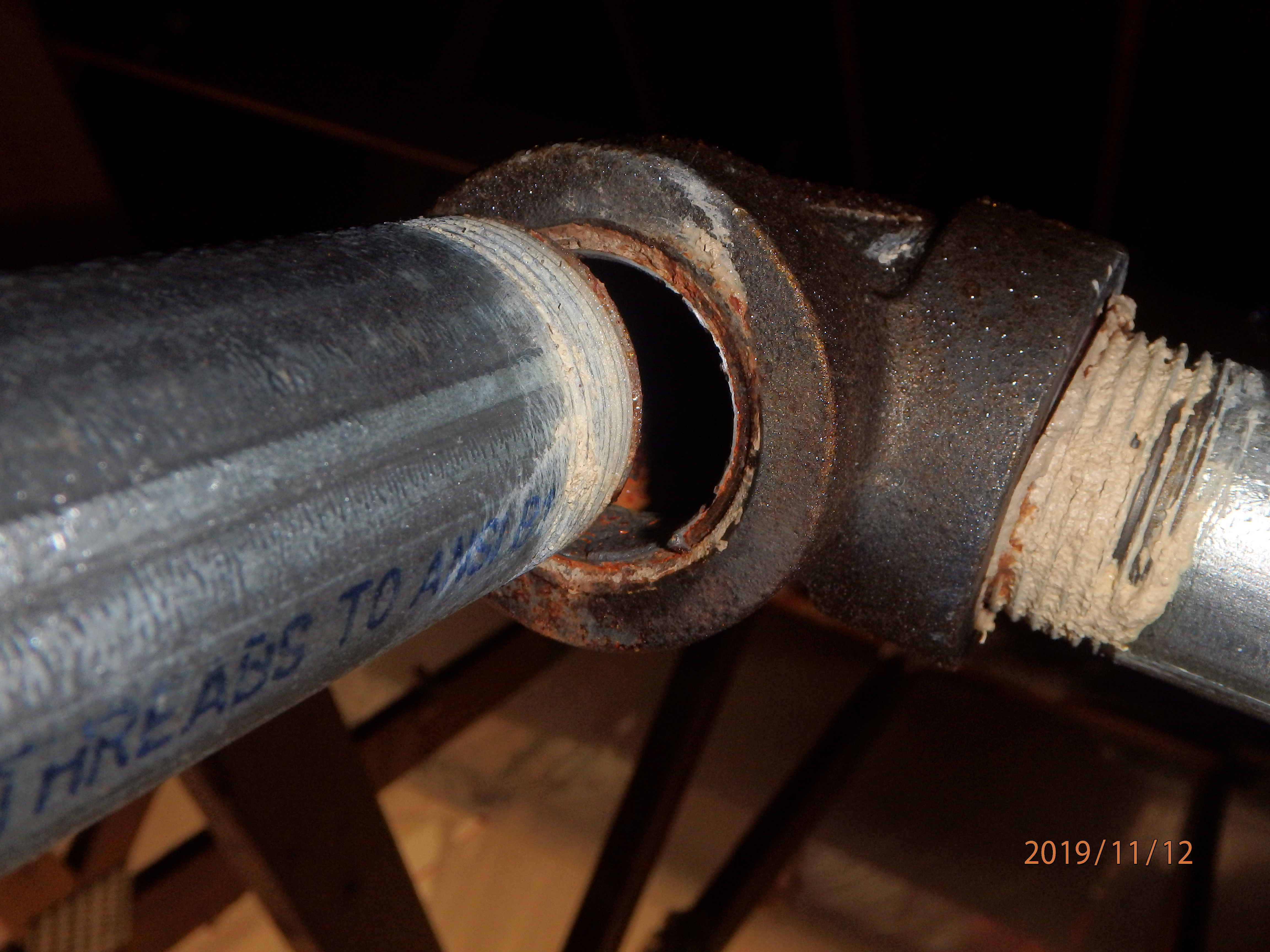
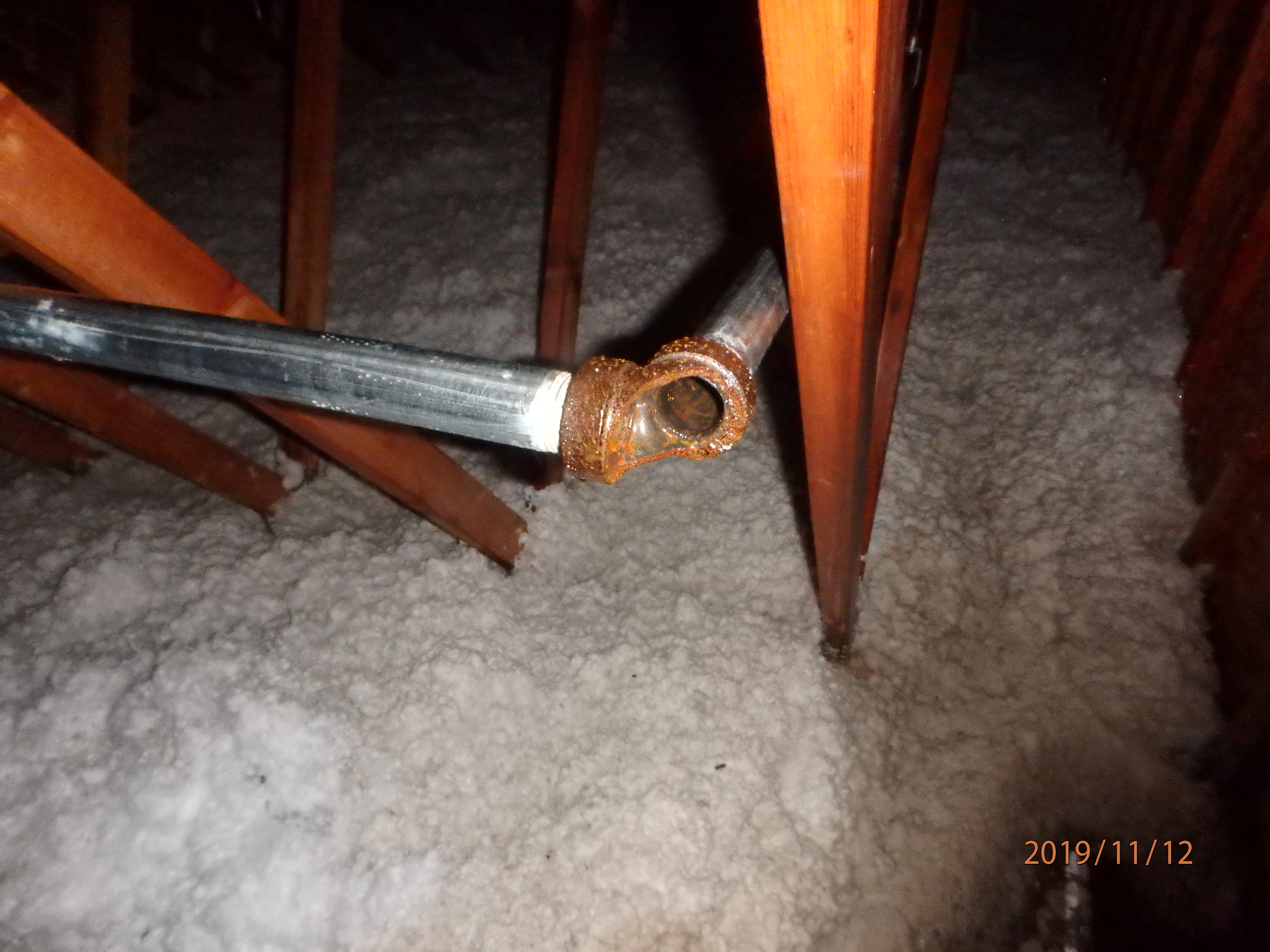 />
/>
Figure 3 – Freeze Failures in Dry Systems
Second, when the oxygen in water comes in contact with black or galvanized steel pipe, the corrosion process begins. It is imperative that all the moisture is removed from the dry sprinkler system. NFPA 13 installation requirements such as pipe slope and low-point drains facilitate water removal. However, drains must be clearly identified by drawings and signs (NFPA 13 requirements) and the locations and instructions for use must be clearly communicated to the owner / managers.
It is imperative that this is part of the acceptance testing procedures and the fire sprinkler contractors are the experts entrusted with this documentation and training. See Figure 4 for examples of corrosion in dry sprinkler systems that can be discovered in as few as seven to ten years. This corrosion process shortens system life expectancy, often causing freeze failures, but also obstructs pipes and sprinklers. Obstructed pipe and sprinklers, during a rare fire event, do not allow the fire sprinkler system to control the fire as intended.

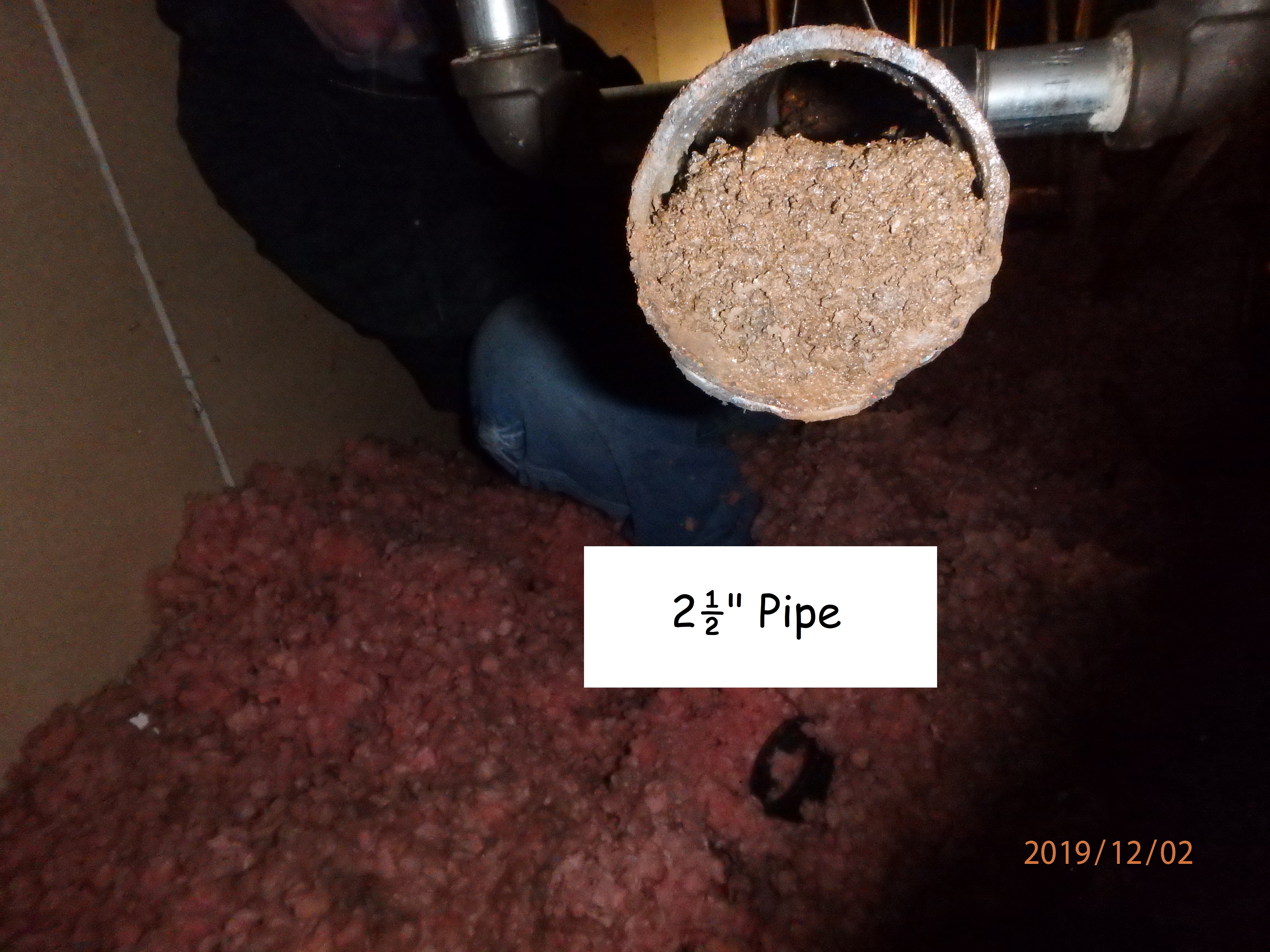
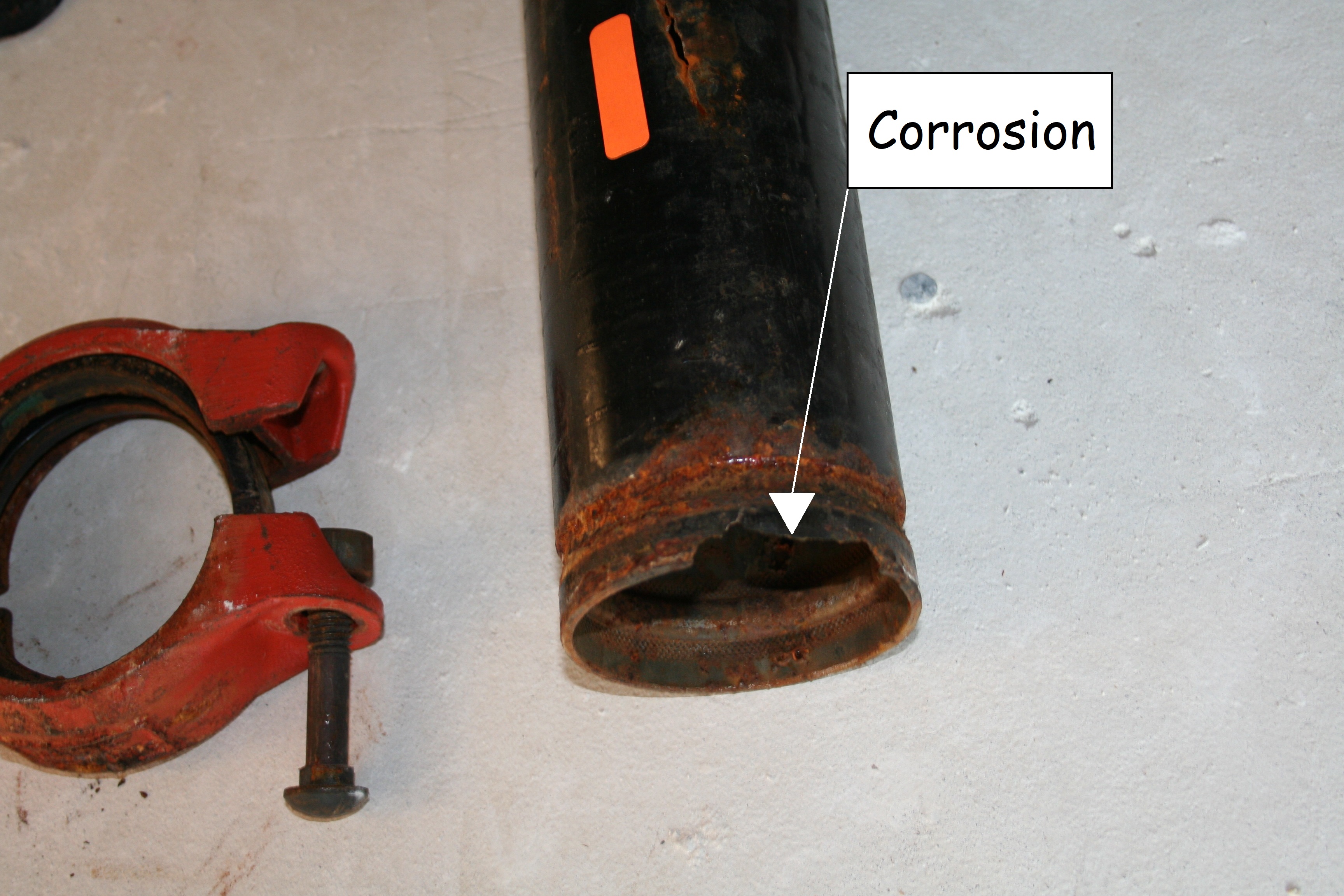 />
/>
Figure 4 – Internal Corrosion: Pinholes, Sludge, Split Pipe, Rotted Pipe Ends
Owner Orientation by Contractors
Instructions to managers should be video recorded for the end-users and should include the following:
- How to operate the valves.
- Where all drains are located and how to operate the same.
- A copy of NFPA 25, Standard for the Inspection, Testing, and Maintenance of Water-Based Fire Protection Systems, the current applicable edition in the jurisdiction.
- The specific requirements from NFPA 25 the owner should contract out to trained contractors and the particular requirements from NFPA 25 the owner must perform itself.
- An annual visit by a sprinkler contractor does NOT include everything that the standard requires for inspection, testing and maintenance (IT&M). Unless the sprinkler contractor educates the owner, many of these requirements are never understood or known to the owner / manager.
- What failure modes can be expected if the owner doesn’t contract for full IT&M inclusion by contractors.
Lifetime IT&M Requirements
Additional information the contractor can supply to the building owner / manager during acceptance testing includes:
- An explanation by the sprinkler contractor that NFPA 25 changes every three years and the owner needs to obtain an updated copy and follow minimum requirements for their specific systems.
- Ownership changes need to hand off the sprinkler system design and maintenance information to new owners.
- If the owner changes IT&M contractors, there needs to be system orientation between the owners and the new contractors.
Acceptance testing of fire and life safety systems should be significantly more orchestrated and thorough than is the current practice. It should include detailed communications between fire alarm and fire sprinkler contractors and between those same contractors and individuals responsible for the long-term inspection, testing and maintenance of these systems that provide fire, life safety, property and fire fighter protection.
ABOUT THE AUTHOR: Scott A. Futrell, PE, FSFPE, CFPS, SET, CFEI, is a fire protection engineer with Futrell Fire Consult & Design, Inc., in Osseo, Minnesota and has more than 40 years’ experience designing, specifying and investigating fire protection systems. He is a Fellow in the Society of Fire Protection Engineers and has provided fire sprinkler system education through the Society for almost 20 years. He can be reached by e-mail at scottf@ffcdi.com or visit www.ffcdi.com.
